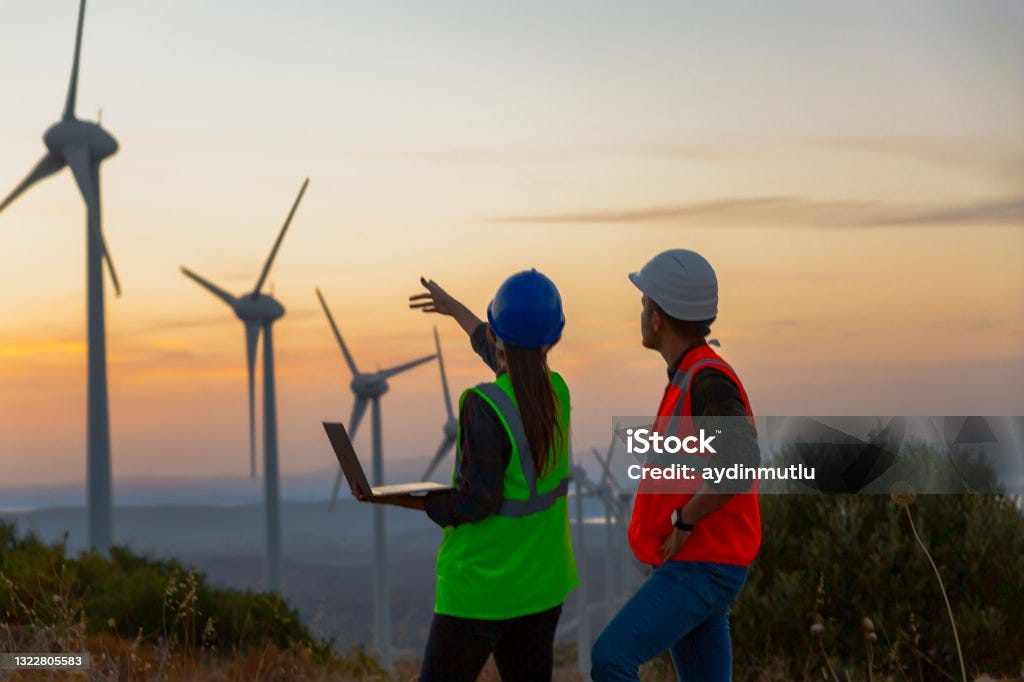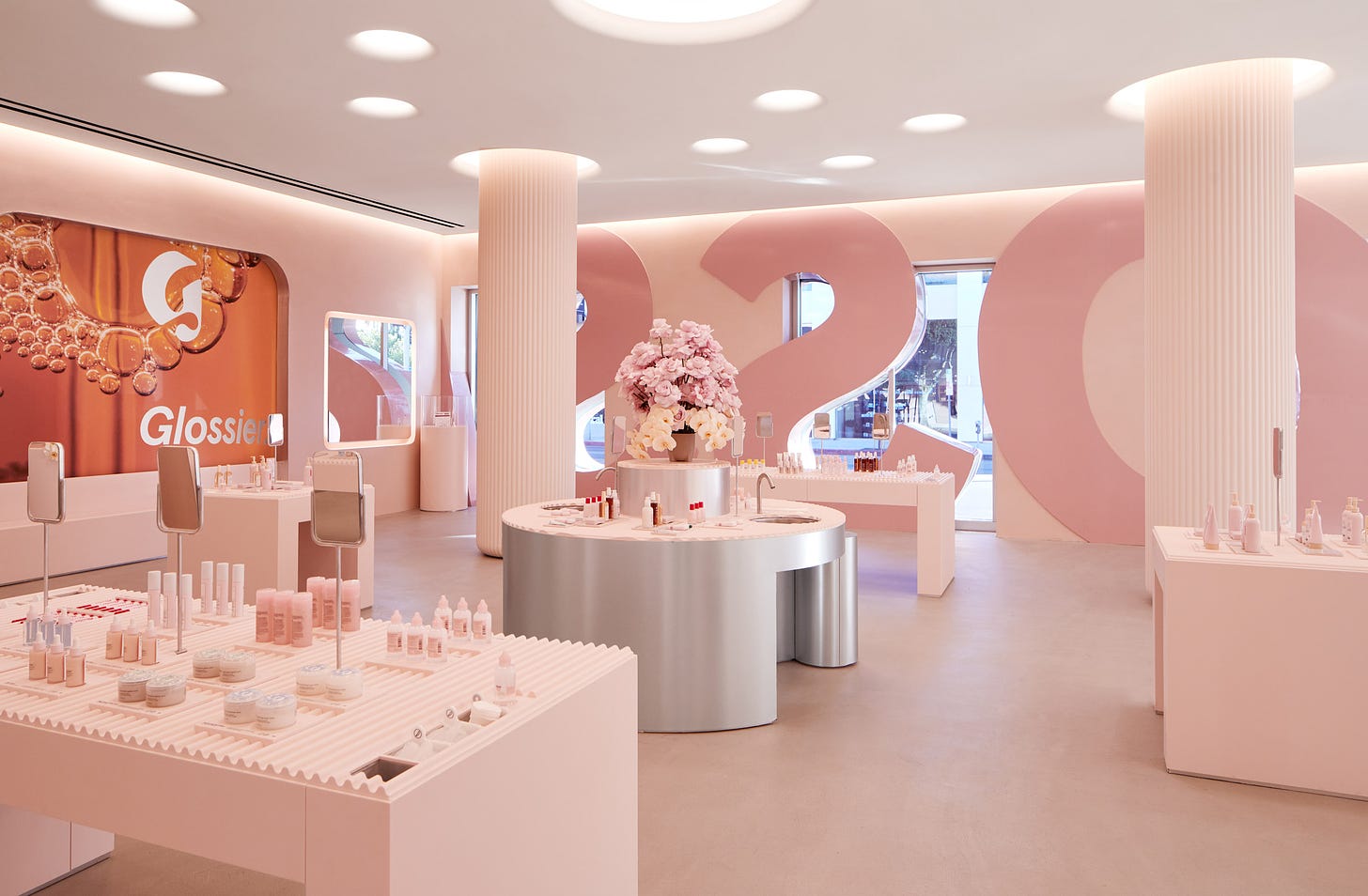A Green New Deal for Graphic Designers
Thinking through what an actually sustainable creative career could look like.
Picture a 'Green Job.' Chances are it involves someone in a hard hat holding a clipboard, pointing at a wind turbine.
Clean energy—and transitioning energy workers away from fossil fuel extraction—is a vital aspect of the necessary transition away from fossil fuels, but this stock photo idea of a green new deal doesn’t include most of our economy (writing here from the UK), which is largely based on service rather than manufacturing. And there are dirty, filthy, smog-infused, lung-clogging sectors in the service economy: the financiers who perpetuate fossil fuel extraction to name an obvious one. And then there's advertising.
The advertising industry provides a haven for all the creative minds who want to make a decent living as a designer, illustrator, writer, away from from the precariousness of the struggling artist, poet or novelist. It lures us in with its promise of creative fulfilment, a vibrant social life and the opportunity to put our genuine passion and hard earned skill to use. Then it makes us sell cars.
We don't think of advertising as a carbon-intensive industry. After all, a bunch of computers, flip-charts and sharpies can't be that unsustainable. And we recycle the Prosecco bottles at the end of the week. But consider that the job of advertising (and marketing, branding and PR) is to increase growth: to take any given quarterly revenue graph and push the line up and up. That means more cars, more clothes, more oil, more gas, more carbon, more whatever. More waste.
Perhaps it's an obvious point, but it's one that people like Mark Read of WPP would like you to ignore. By his account, his company's fossil fuel clients simply want help to be "truthful, fair and accurate." But if the industry was forced to take it's full impact into account, it wouldn't be able to exist under the current net-zero framework.
Given the creative industry at large is primarily an engine for growth (and growth means eventual, slow and spectacular, calamitous death), what are we to do? What does a 'just transition' look like for the creative industry? Can we sell our way out of capitalism??
I want to focus on the creative sector, so I won't go into economic and political theory (I’ll spare you my novice takes on Marx) but I would like to outline what I personally wish our system could look like:
I think it's reasonable, and not utopian or frivolous, to envision a system that puts public wellbeing over and above private wealth. An economy that takes into account the cost of expending natural resources and prices those resources accordingly. A system that can mitigate waste and put as much investment as possible back into the system (which is geared towards public wellbeing.) I refuse to accept that this is too much to ask, or that it's unrealistic to work towards.
It may or may not be realistic to you, depending on your own tendency towards cynicism, but let's say we get some way towards addressing the balance. Where does advertising and marketing fit? If there's no demand for endless growth, surely there's no need for it? Well, maybe not as much, but there are always creative, artistic people, and creativity is necessary in most pursuits.
What then will a creative career look like? Here are a few things a creative agency might do in a system that is not completely extractive and exploitative:
'Selling' behaviours and lifestyle changes.
Mass communication, whether commercial advertising or government messaging, is propaganda. Part of the work of the creative industry will be to make lifestyle change desirable, and to promote pro-social and pro-environmental behaviours. This might be state-funded, some will be philanthropic, but there is a role for businesses and entrepreneurs too (I'll get to this below). It's happening already, albeit on a very small scale relative to our vast consumerist machinery.
Aiding democratic and public service.
From experience design through to social media content, there's a whole world of public processes and services that sorely need attention. Each point at which the public interacts with a service requires careful thought, creative problem solving and communication, and many experts and generalists should be collaborating on their design.
The same goes for the democratic process. Not just inspiring and informing people around elections, but encouraging participation in local planning and decision making.
Just think about the amount of thought and creativity that goes into the design of Glossier and Nike's flagship stores. What if we could apply that creativity to something as boring as public consultation?
Promoting Community Interest Companies and Not-for-profit businesses
There are businesses—operating right now—that would fit into the aforementioned ideal. They need to create engagement and reach their audience as much as anyone.
A Community Interest Company (CIC) is a limited company that exists to benefit the community rather than private shareholders.
A Not-for-Profit Business (not to be confused with a Nonprofit or charity) essentially works like a normal business, except with 100% of its profits invested in community, charity or environmental projects (see Jennifer Hinton for more on this idea.)
It's not hard to imagine a world where all businesses are beholden to their community rather than shareholders or directors—this relatively simple switch would have transformative consequences—and they would still need to compete to exist. These companies still need to use creativity and desire and humour and emotion to engage their customers and thrive.
Now imagine your creative agency is also one of these business. Not being beholden to a profit-motive would, in a successful agency, enable everyone to be paid well, and put creativity first. A system that's not driven by growth but by need would also not require a surplus of labour, or—to put it another way—thousands of graduates pulling all nighters on pitches. It would mean less hours, more collaboration, better social cohesion and less stress. If this feels like some unattainable utopia right now, then it might be time to start asking why that is.
What about now, though? What can a skilled creative person do to take a small step towards this pragmatic utopian dream?
My advice to up-and-coming designers, copywriters and creatives: start looking for jobs in those above areas. It might take some hopping and skipping through typical commercial agencies and companies, but each hop adds another string to your bow. Start to gravitate towards the roles that serve some kind of public good, whether that's through well-meaning brands, non-profits, CICs, or even well-meaning agencies that still have to make compromises. It might even mean working in or with… the Government.
A lot of agencies outside the big holding groups are starting to experiment with new business models like the CIC, as well as the Co-operative model. Seek them out (perhaps look into starting one!) and have conversations with people about these ideas and what small steps can be taken towards a better system.
Here's an interview question you can ask a prospective employer: "what's your plan for a sustainable future?" It will make you sound smart, like you care about the longevity of the organisation, and if it sounds like they've given it some real thought then maybe it’s an open door you can continue to push. If they start talking about recycling, well then maybe it’s time to consider getting your clipboard out and figuring out how wind turbines are made.
Thanks for reading this far! If you enjoyed this, click the heart at the bottom! It helps other people see it. If you think someone else might enjoy it, click this here Share button :) It helps other people see it:
Inspiration
A few things drove me to write this:
Working on Purpose Disruptors' latest Advertised Emissions report and the Agency for Nature
Listening to this episode of Upstream:
A quick note: subscribers may have also received a newsletter from me recently. I hope this didn’t feel like an imposition! The idea is to use those newsletters to update people on my recent design work, as well as some more links to interesting stuff related to design, communication and the climate crisis. If you’d like to receive that one, you can sign up here :)








The focus on people